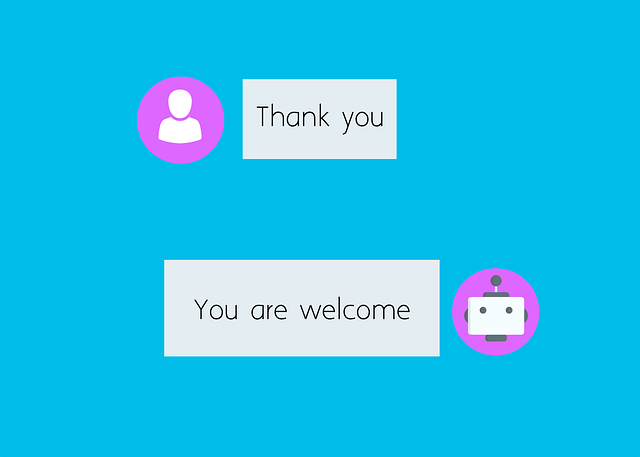In competitive Shopify e-commerce, measuring KPIs like Return on Revenue (ROR) is crucial for success. Implementing a free chatbot like oChatBot can drive sales, reduce support costs, and enhance user engagement, as evidenced by reduced query response times, increased conversion rates, and improved customer satisfaction. Success requires setting clear goals, tracking conversation and conversion rates, average order value, and customer retention to calculate ROI. Personalized interactions, seamless integration across platforms, proactive engagement strategies, and continuous optimization based on data and feedback ensure the oChatBot continually contributes to increased revenue for Shopify stores.
In today’s digital era, e-commerce platforms like Shopify are transforming the way businesses operate. One innovative tool gaining traction is the free chatbot for Shopify, which promises to boost sales and enhance customer experience. This article delves into understanding return on revenue (ROI) as a critical metric for Shopify stores. We explore how a free chatbot like oChatbot can drive efficiency, increase conversions, and ultimately achieve higher revenue. Learn practical strategies to maximize your ROI through effective chatbot implementation.
- Understanding Return on Revenue: A Key Metric for Shopify Businesses
- The Role of a Free Chatbot for Shopify in Boosting Sales and Efficiency
- Measuring Success: Calculating ROI for Your Shopify Chatbot Implementation
- Strategies to Maximize the Impact of oChatbot and Achieve Higher Revenue
Understanding Return on Revenue: A Key Metric for Shopify Businesses

In the dynamic landscape of Shopify e-commerce, understanding key performance indicators (KPIs) is crucial for success. Among these, Return on Revenue (ROR) stands out as a vital metric that helps businesses gauge the effectiveness of their operations. For Shopify merchants considering implementing a free chatbot like oChatBot, knowing ROR can demonstrate the potential value and profitability of this strategy.
By examining the revenue generated against the costs incurred, ROR provides insight into the overall efficiency and sustainability of a business model. In the context of a Shopify chatbot, this metric can highlight how effectively the virtual assistant is driving sales, reducing customer support costs, or enhancing user engagement – all factors that contribute to a healthier bottom line and long-term success in today’s competitive digital market.
The Role of a Free Chatbot for Shopify in Boosting Sales and Efficiency

In today’s digital era, where customer expectations are higher than ever, a free chatbot for Shopify can be a game-changer for online retailers. By implementing an oChatbot on your e-commerce platform, you gain a powerful tool to enhance both sales and operational efficiency. These intelligent bots can provide instant customer support, answer product queries, and offer personalized recommendations, thereby improving the overall shopping experience.
The benefits are twofold: first, it reduces response times for customer inquiries, allowing your team to focus on more complex issues. Second, by leveraging AI-driven conversations, the chatbot can guide customers through the sales funnel, increasing the likelihood of conversions. This strategy not only boosts revenue but also ensures that even when your human agents are unavailable, customers still receive prompt and effective assistance.
Measuring Success: Calculating ROI for Your Shopify Chatbot Implementation

Measuring the success of your Shopify chatbot implementation goes beyond simply having conversations with customers. The ultimate goal is to understand how this technology translates into tangible business benefits, and that’s where calculating Return on Investment (ROI) comes in. ROI for a free chatbot like oChatbot can be calculated by setting clear goals and tracking key metrics. Start by defining your objectives: increased sales, improved customer satisfaction, reduced support costs, or enhanced data collection. Then, monitor metrics such as conversation rates, conversion rates, average order value, and customer retention over time.
By analyzing these numbers, you can assess the impact of your chatbot on revenue generation, operational efficiency, and overall customer experience. For instance, a higher conversation rate might indicate that customers are engaging more with your chatbot, potentially leading to increased sales or improved product recommendations. Remember, accurate measurement is key to understanding the value of your Shopify chatbot investment and making data-driven decisions for future improvements.
Strategies to Maximize the Impact of oChatbot and Achieve Higher Revenue

Implementing a free chatbot for Shopify can significantly boost your store’s performance and revenue. To maximize the impact of oChatbot, focus on personalizing customer interactions by leveraging their purchase history and browsing behavior. Tailor recommendations and offers to individual preferences, creating a unique shopping experience that encourages higher conversion rates.
Additionally, ensure your chatbot is integrated seamlessly across all platforms, from website chat to social media messaging. Proactive engagement strategies, such as sending personalized product suggestions or offering exclusive discounts through the chatbot, can foster customer loyalty and drive repeat purchases. Regularly update and optimize your chatbot’s scripts based on user feedback and analytics data, continually enhancing its ability to contribute to increased revenue for your Shopify store.
Implementing a free chatbot for Shopify can significantly enhance both sales and operational efficiency. By understanding return on revenue (ROI) and employing strategies to maximize the impact of an oChatbot, businesses can achieve higher revenue and improve customer satisfaction. Remember that measuring success involves calculating ROI, tracking key performance indicators, and continually refining your approach based on data insights. With the right tactics, a Shopify chatbot can become a game-changer in today’s digital marketplace.
